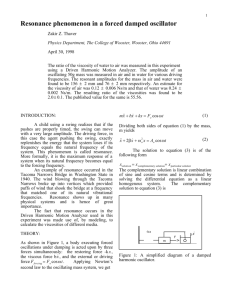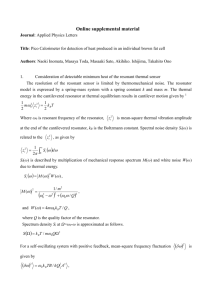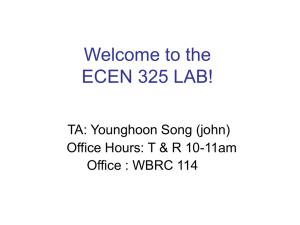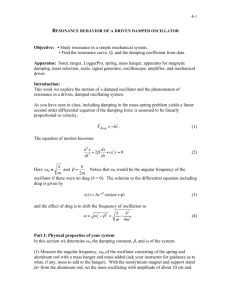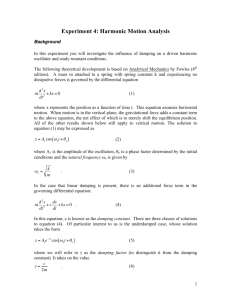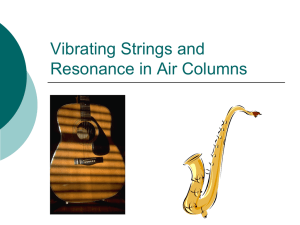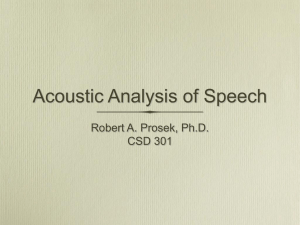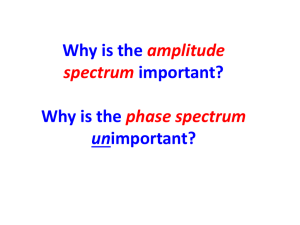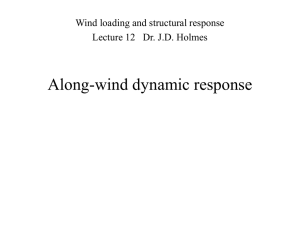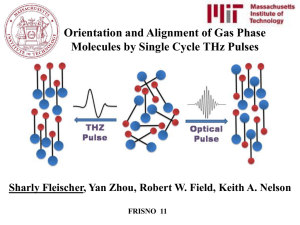Resonance Clicker questions by Trish Loeblein and Mike
advertisement
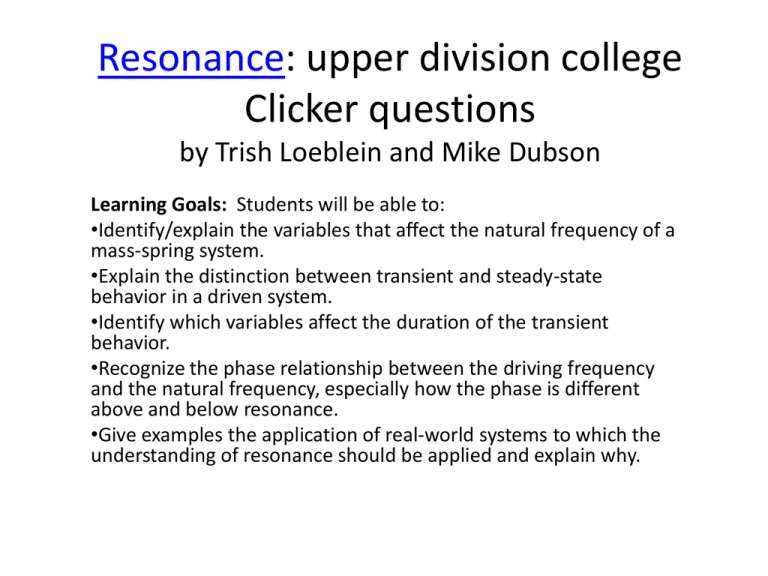
Resonance: upper division college Clicker questions by Trish Loeblein and Mike Dubson Learning Goals: Students will be able to: •Identify/explain the variables that affect the natural frequency of a mass-spring system. •Explain the distinction between transient and steady-state behavior in a driven system. •Identify which variables affect the duration of the transient behavior. •Recognize the phase relationship between the driving frequency and the natural frequency, especially how the phase is different above and below resonance. •Give examples the application of real-world systems to which the understanding of resonance should be applied and explain why. 1. Which system will have the lower resonant frequency? Mass (kg) Spring constant (N/m) Driver Amplitude (cm) 2.5 5.0 100 100 2.0 4.0 A) 1 B) 2 C) Same frequency 2. Which system will have the higher resonant frequency? Mass (kg) Spring constant (N/m) Driver Amplitude (cm) 5.0 5.0 200 100 2.0 4.0 A) 1 B) 2 C) Same frequency. 3. Which system will have the lower resonant frequency? Mass (kg) Spring constant (N/m) 3.0 3.0 400 400 Driver Amplitude (cm) 0.5 1.5 A) 1 B) 2 C) Same frequency. 4. If the frequency f of the driver is not the same as the resonant frequency, which statement is most accurate? The steady-state amplitude is .. a) smallest at the highest driver f. b) largest at the highest driver f. c) is largest at driver f nearest the resonant frequency. d) is independent of driver f. 5. Transient behavior will last longer when A) B) C) D) the damping constant is decreased. the driving amplitude is increased. Both of these. None of these. The transient behavior is independent of the damping and the amplitude. 6. Two resonators are driven at the same driving frequency and amplitude. One resonator has a resonant frequency 2 Hz below the driving frequency. The other has a resonant frequency 2 Hz above the driving frequency. Which resonator has the smallest steady-state amplitude? A) The lower frequency resonator. B) The higher frequency resonator. C) Both have the same steady-state amplitude.


